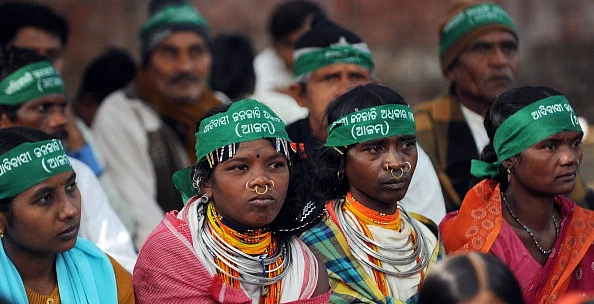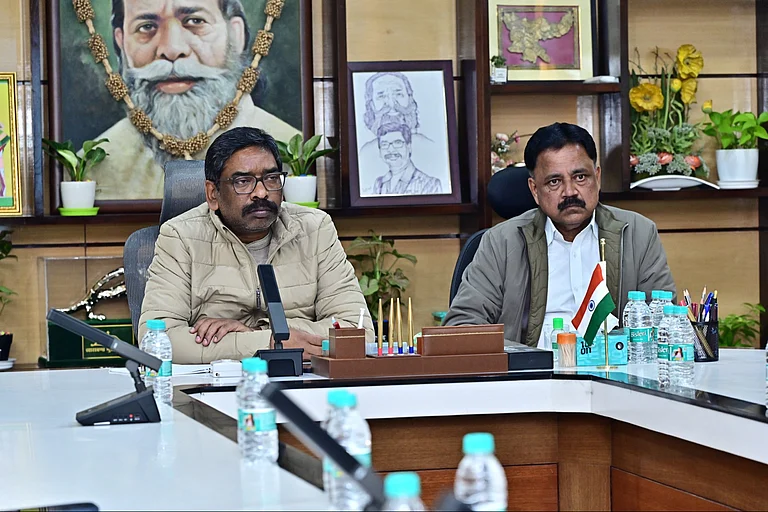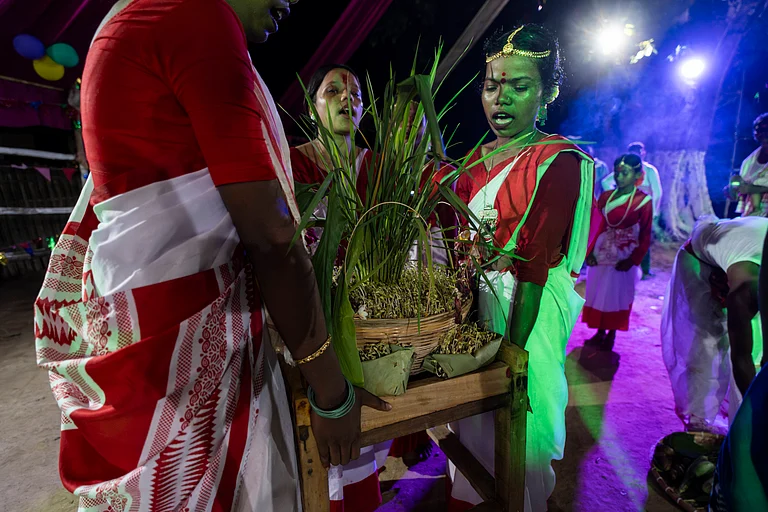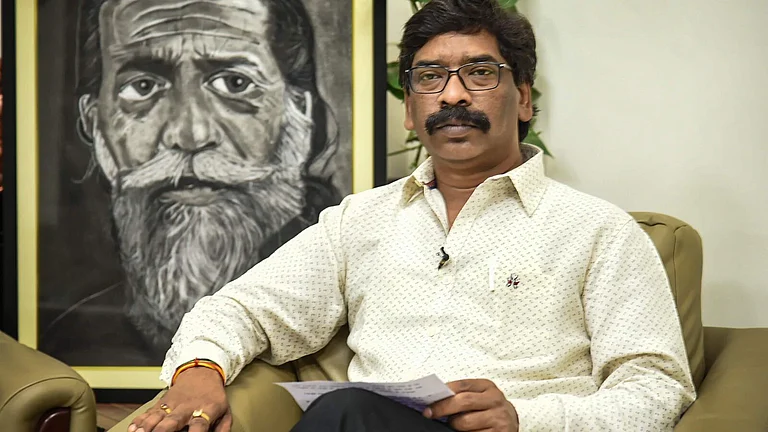“The manner in which Baba Bhimrao Ambedkar, who had dreamt that all sections of the society (religion, caste sect) are able to come together on one platform, I feel that the way he had to embrace Buddhism (by giving up his religion), something similar is being planned for the Adivasis and the Dalit in the future.”
These words of former Jharkhand Chief Minister Hemant Soren from the floor of the house just minutes before the Enforcement Directorate (ED) took him away not only point to a new form of Adivasi aspirations but also calls for a Dalit-Adivasi mobilisation that Soren’s party Jharkhand Mukti Morcha (JMM) has historically been known for. While addressing the house after the trust vote where the JMM-Congress-Rashtriya Janata Dal (RJD) alliance successfully proved its majority, Soren repeatedly reiterated his Adivasi identity and said that an Adivasi riding BMW irked the ruling class leading to his "arrest".
Such strong evocation of Adivasi identity on the floor of the house has lately been missing from Indian politics. On December 19, 1946, legendary Adivasi leader Marang Gomke Jaipal Singh Munda said in the parliament, “Sir, I am proud to be a Jungli, that is the name by which we are known in my part of the country.” But these words could not find much resonance in the following generations — except during JMM’s struggle for an independent Jharkhand.
However, the void in the Adivasi voices in the parliament has a long history. It was none other than Dr BR Ambedkar who in 1945 wanted to deny representation to Adivasis in the Central Assembly and said, “The Aboriginal Tribes have not as yet developed any political sense to make the best use of their political opportunities and they may easily become mere instruments in the hands either of a majority or a minority and thereby disturb the balance without doing any good to themselves.”
The Adivasi groups were, nevertheless, in no way ready to accept such disenfranchisement. The Naga National Council on February 19, 1947, said, “Democracy in its purest form exists among the Nagas.”
The Adivasi Student Fellowship, which made an appeal for a separate Jharkhand, wrote to the Central Assembly: “India is marching towards democracy. We will be the future free citizens of India. India will be teaching democracy to her children. We are the most democratic people on Earth. We have maintained the principles and ideals of democracy from the very beginning. What we require at present is protection from disrupting us into tribes and sub-tribes by the present Government.”
Significantly, Soren’s speech in the assembly was interspersed with such evocations. Calling for Dalit-Adivasi unity, he fumed, “Where does so much malice come from in their minds? This is beyond my understanding. The systems nurtured by them are not shy in saying they were in the jungle, so they should remain in the jungle. We came out of the forest and sat next to them. Jharkhand is a tribal and Dalit-dominated backward state. We left no stone unturned to take it forward.”
The efforts of Soren to bring Adivasi identity to the centre of politics, notably, comes at a time when Prime Minister Narendra Modi has been evoking BJP’s policies for Adivasis and trying to strengthen BJP’s outreach among the community ahead of the 2024 Lok Sabha elections.
Recently, while delivering his speech in Rajya Sabha, PM Modi said, “We have always prioritised them... first Dalits and now Adivasis. Who are the beneficiaries of our schemes? All our works are for the SC, ST, and OBC communities.” He also did not forget to mention that it was his government that for the first time made an Adivasi woman the President of the country.
Reminding the opposition parties of the latest presidential contest when they deputed Yashwant Sinha against Murmu, the PM continued, “Your (opposition to Ms Murmu) wasn’t for ideology. You made someone who went from BJP (former Union Minister Yashwant Sinha) the candidate. You were opposed to an Adivasi woman.”
However, the absence of President Murmu during both the inauguration of Ram Mandir and the new parliament building indicates the seriousness of the ruling party regarding Adivasi representation, says the opposition.
Last year, the PM took a significant step to address Adivasis —both culturally and politically— when he decided to celebrate the birth anniversary of Adivasi icon Birsa Munda from his village. In that programme only, he launched Rs 24,000 crore project for particularly vulnerable tribal groups (PVTGs).
Symbolic evocation of Adivasis also found echoes in the speeches of his ministers before the inauguration of Ram Mandir. Rajnath Singh, the Defence Minister of India, just prior to the consecration ceremony, said, “Ram is the figure of unity. He is the purshottam who went to the house of Shabari mata and proved that he didn’t believe in social hierarchy.” The reference of Shabari mata —an assumingly Adivasi character— also found space in Modi’s speech after the consecration ceremony.
Such continuous efforts of the Sangh to accommodate Adivasis —whom they call Vanavasis— within the broader Hindu fold were challenged by Soren when he passed the resolution in favour of the Sarna religion and called for Adivasi unity. Last year, while talking to Outlook, senior BJP leader and MLA Ramchandra Chandravanshi said, “What is Sarna? All of us are Hindus. Adivasis worship nature but that doesn’t buy them the recognition of a separate religion.”
So, it is seemingly a fight over the identity of Adivasis in future, think activists. Though the National Crime Records Bureau (NCRB) data clearly shows that the attacks on Adivasis have continuously increased since 2013 and Madhya Pradesh and Uttar Pradesh —both the BJP-ruled states— are leading in numbers; the Adivasis had preferred BJP over the Congress in the latest set of assembly elections. Notably, Madhya Pradesh, Chhattisgarh, and Rajasthan —all tribal-dominated states— went to BJP and the ST seats that in 2018 favoured Congress giving them an edge, switched sides.
Explaining this political shift, one of the senior journalists who has been working in Madhya Pradesh for decades, says, “The RSS has been working in the Adivasi regions through different organisations for almost 25 years. Even after that, in 2018, they gave Congress a chance but the party couldn’t manage to offer what they expected.”
However, another journalist referred to the excitement over Ram Mandir that worked as a pull-factor for Adivasis. On January 21, a day before the consecration ceremony, a few Adivasi right-wing activists rode to a church in Jhabua and planted the saffron flag atop the Holy Cross. That this incident happened in Jhabua —the district with the highest Adivasi concentration in MP— makes it more evident that there has been a saffron surge in Adivasi regions.
The competitive identity politics that has grown in the last few years among three groups —Adivasi Hindus, Adivasi Christians, and Sarna Adivasis— will shape the future politics of tribals in India, says an Adivasi commentator. In this context, Soren’s arrest becomes another point of contention — perhaps opening a new path to shape the future.



























